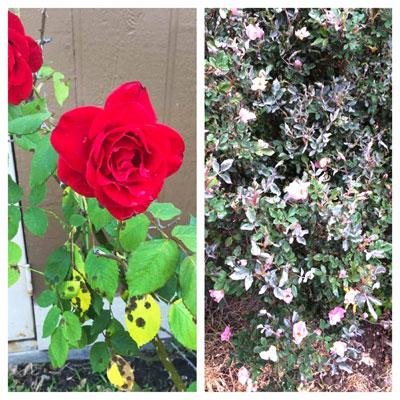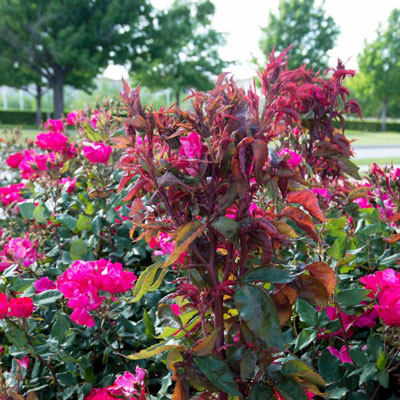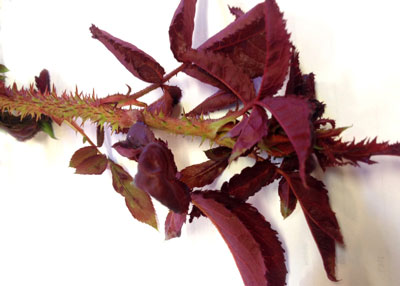Question of the Week: April 14, 2016

Black spot of roses on left, powdery mildew on right.
Unless you live in or near DFW, your rose questions may boil down to two old, traditional inquiries.
“What are these spots all over my rose leaves, and what can I do to stop them?”
This is a fungal disease called black spot of roses. It’s been the plant’s curse since gardeners first grew roses. It’s not fatal, but it certainly weakens the plant so that other maladies can move in. Eventually it causes all of the lower leaves to fall off, leaving a tall stem with a rose plant growing on top of it. The controls: plant the TAMU EarthKind® rose selections. They have been identified for their resistance to the disease. Also, keep the foliage as dry as you can. Black spot is more of a problem in the humid parts of East and South Texas. Third, apply a labeled fungicide on a weekly basis until the hot, dry weather of early summer (usually June).
“What causes this flour-like dusting all over the leaves and buds of my rose?”
This is another fungus, notably powdery mildew. It becomes a problem in cool, moist weather, most especially in spring. As with black spot, keep the foliage dry by watering with a garden hose or with drip irrigation instead of overhead sprinklers, also by applying a legally labeled fungicide.
But from D/FW and its surrounding area:
“Neil, is this rose rosette virus?”

This rose stem exhibits the typical rose rosette virus clubiness, often referred to as “bull canes.”
And that’s the question I’m being asked time after time after time by gardeners in and around D/FW where I live. Rose rosette virus has ruined thousands of rose gardens, public and private, in the Metroplex over the past four years. For whatever the reason, it is not nearly the problem in other parts of Texas. It is transmitted by a wind-born microscopic mite. There is no prevention, and there is no cure. Affected plants must be dug and sent to the landfill, roots and all, in heavy plastic trash bags.
Rose rosette is characterized by its clubby growth and extreme thorniness. Here is information I have left in place on my website due to the scores of questions I am asked each month.

Rosette-infected stems exhibit extreme thorniness.
